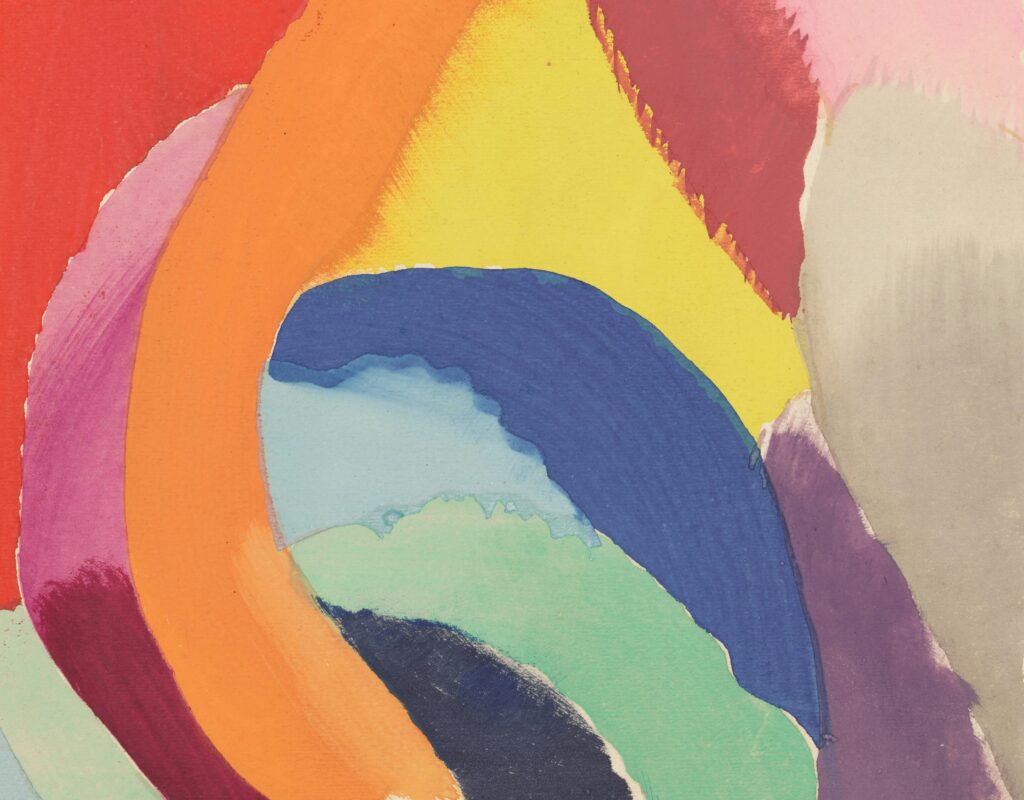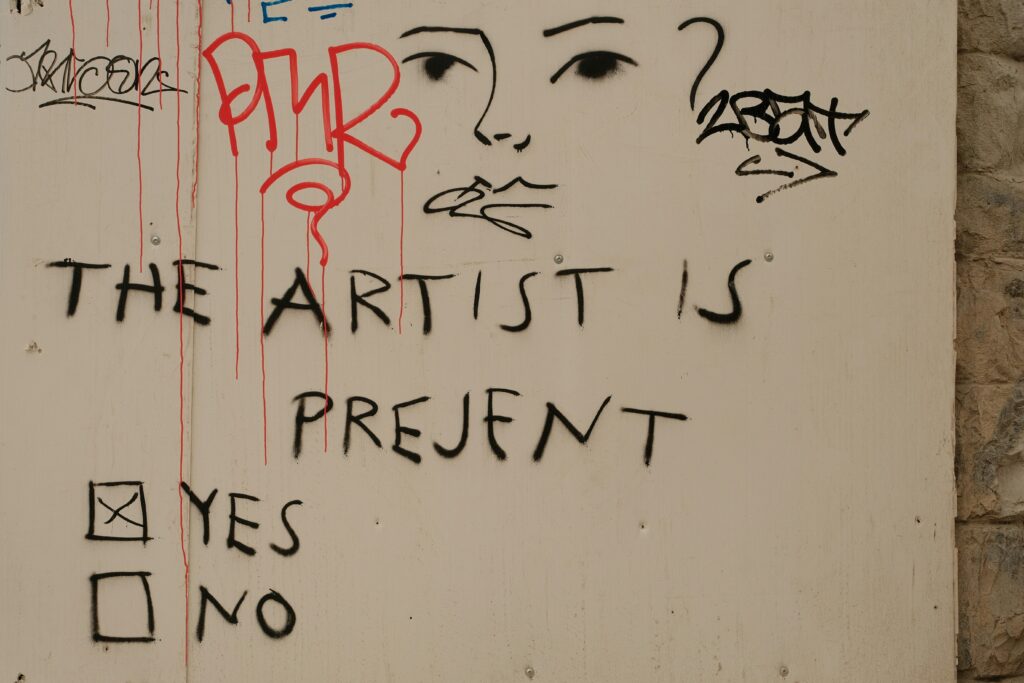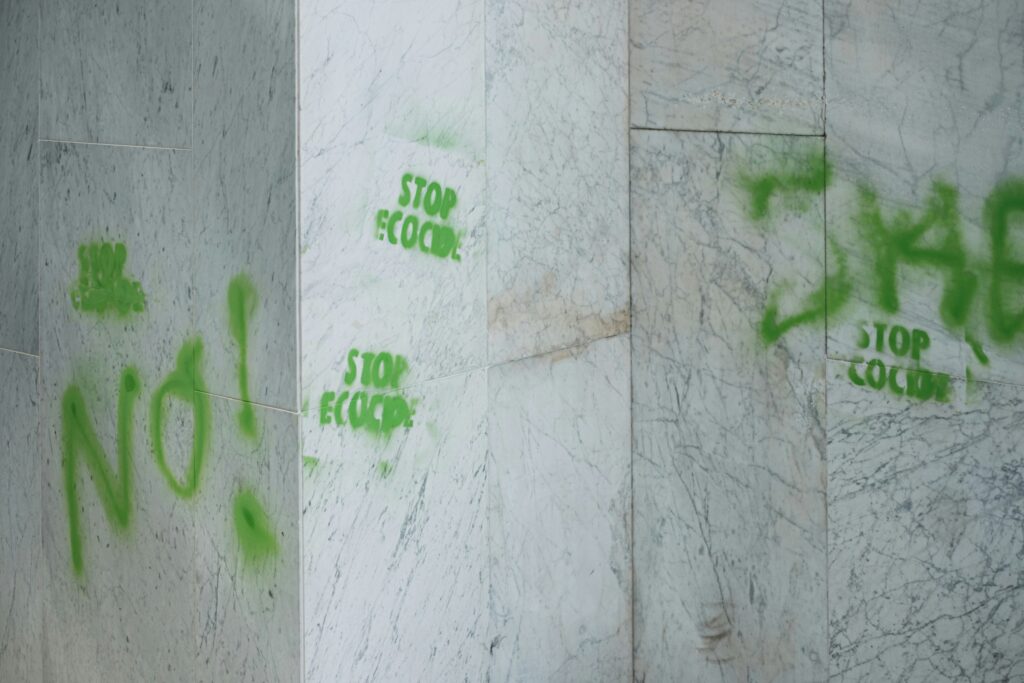Abstract Art Today: Layer, Texture, Scale, and Concept
Modern abstract art is evolving far beyond the brush. Artists today are experimenting with multidimensional techniques, embracing digital tools, and expanding the limits of physical space. At its core, abstraction in 2024 is less about aesthetic ambiguity and more about provoking thought, conversation, and interaction.
The Modern Artist’s Toolbox
Contemporary creators are pushing abstraction forward by using increasingly diverse materials and methods.
- Layer: Artists strategically build layers to create depth, both visually and conceptually. Paint, digital patterns, collage, and photography often coexist in a single piece.
- Texture: Raised surfaces, unexpected materials, and tactile elements make the work feel physical and immersive.
- Scale: Monumental works and immersive installations dominate galleries, challenging the viewer’s sense of space and perspective.
Embracing New Mediums
Innovation in abstract art isn’t just about materials — it’s also about format. Artists today use cutting-edge technologies and cross-disciplinary practices to deliver fresh interpretations.
- Mixed Media: Combining paint with textiles, printed material, sound, and even performance allows for layered expression.
- Installation Art: Full-room environments or spatial interventions pull viewers inside the artwork itself.
- AI-Assisted Pieces: Algorithms now collaborate with artists, generating unique patterns, reinterpreting data, or simulating brushwork.
These formats aren’t novelty — they’re becoming mainstream in contemporary abstract practice.
The Evolving Meaning of Abstraction
Abstraction is no longer just visual or formal. It serves as a vehicle for exploring complex themes — identity, memory, digital culture, and even economics.
- Artists use abstract forms to ask questions rather than provide answers.
- The “abstract” becomes a conceptual space, a metaphor rather than a style.
- Viewers are invited to interpret, interact, and even complete the meaning of a piece.
Abstraction today is not an escape from clarity — it’s a demand for deeper engagement. In a landscape saturated with literal images and constant scrolling, the abstract provides pause, reflection, and unexpected insight.
New Voices Reshaping the Art World
Key Figures Expanding the Field
A new generation of artists is pushing contemporary art into fresh and innovative territory. These creators are redefining what it means to make art today, breaking down traditional barriers and welcoming new perspectives.
- Artists from underrepresented regions are gaining global recognition
- Young voices are reshaping galleries, museums, and public spaces
- Collectives and community-focused creatives are redefining authorship and collaboration
Diversity Driving a Narrative Shift
The diversity agenda in contemporary art is no longer optional—it’s fundamental. The emergence of female, non-binary, and culturally diverse artists has been instrumental in expanding the thematic and stylistic boundaries of the field.
- Increased visibility for women and LGBTQ+ artists
- Art rooted in lived experiences, heritage, and activism
- Growing representation shifts how institutions curate and collect
Cross-Pollination Across Mediums
Contemporary artists are increasingly blurring the lines between disciplines. By borrowing from genres like street art, pop art, and conceptual art, they’re creating works that challenge conventional definitions of artistic value.
- Street artists are entering galleries with politically charged pieces
- Pop culture references are being reinterpreted through critical, artistic lenses
- Conceptual frameworks inform works that fuse visual creativity with intellectual engagement
This hybridization not only expands how art looks—it shifts how it functions, speaks, and connects.
Expressionism started as a rebellious twist against realism. It wasn’t about capturing the world as it looked, but how it felt—from the inside out. Think sharp angles, twisted forms, raw emotion. In its earlier days, especially post-war America, it hit canvas through the work of artists like Rothko, Pollock, and de Kooning. It was about gesture, about risk, about the immediacy of impulse.
Today, expressionism isn’t locked into oil paint or massive canvases in NYC lofts. It’s global. It’s digital. Artists from Lagos to Seoul are pulling from the same emotional well but channeling it through film, installation, even social media. Instead of responding to just war trauma or existential dread, it’s now culture, climate, identity, and surveillance. The themes have broadened. The tools have shifted.
What hasn’t changed is the core: feeling first. Expressionism still thrives on intuition and spontaneity. The brushstroke might now be a stylus or an algorithm, but the aim is the same. To cut through the noise and get to something real.
The shadow of the New York School still stretches across the art world. Pollock’s chaos, de Kooning’s aggression, Rothko’s silence—all three carved pathways that many still walk, even if not consciously. Their legacies are baked into the DNA of modern abstraction. But today’s artists often glance backward just long enough to push forward in the opposite direction.
Some reinterpret tradition flat-out. Where Pollock used enamel, a new generation uses code. De Kooning’s gestural force is now echoed in generative brushstroke simulations. And Rothko’s vast color fields? You’ll find them pulsing interactively on VR walls, in forms he never imagined. Technology hasn’t just stepped into the studio—it built a second studio inside the screen.
Others reject that canon entirely. Many contemporary creators see the old guard as too white, too male, too insulated. They’re crafting visual languages that pull from street culture, the global south, or their own digital-first experience. These artists aren’t interested in post-war New York—they’re focused on post-everything internet.
Still, even in rebellion, the influence lingers. The marks might be digital, the canvas endless, but the search for expression inside and beyond the frame? That hasn’t changed.
Interpretation isn’t what it used to be. With interactive and immersive works becoming more common, the viewer is no longer a passive observer but an active participant. The line between artist and audience has blurred. People walk through the work, sit with it, trigger it with motion or sound. Instead of asking, “What did the artist mean?” we ask, “How does this make me feel? What does this remind me of?” That shift matters.
Abstract expressionism used to hang silently on museum walls. Reverence and silence were part of the code. Today, a scroll through Instagram offers a mix of raw emotions, personal takes, and spontaneous reactions to the same kinds of pieces you’d find at MoMA. The difference? Context. At the museum, you’re told what to think. On social media, you’re told to feel—and maybe post about it.
This new way of discovering art opens room for ambiguity and personal narrative. There’s no single explanation anymore. Just a quiet permission to respond in your own words. Sometimes that’s messy. Sometimes it’s powerful. Usually, it’s both.
The Ongoing Tug-of-War: Commercialism vs. Authenticity
The more vlogging grows into a business, the trickier it gets to keep things real. Audiences say they want authenticity, but brand deals and monetization strategies are part of the job now. That tension is unavoidable. Creators are walking a tightrope between staying relatable and paying the bills. When every video feels sponsored, viewers start to tune out. On the flip side, going ultra-raw or anti-commercial can limit growth. It’s not about selling out. It’s about making content that connects while still making a living.
Then there’s the persistent myth: “It looks easy.” For outsiders, vlogging can seem like hitting record and winging it. In reality, it’s pre-production, scripting, lighting, editing, engaging with comments, and staying ahead of fast-moving trends. The job is both mental and emotional labor. Every cut and caption takes time. Good vloggers make it look simple precisely because it isn’t.
Finally, style choices matter. Being abstract is fine. Being careless is not. Some creators lean into surrealism or lo-fi vibes—and that can work—but sloppy storytelling or erratic uploads only confuse the algorithm and the audience. The key is intention. Whether you’re documenting your breakfast or breaking down fashion subcultures, clarity and effort still count.
Gestural Abstraction: Global Healing and Activism
Art as a Global Language
Gestural abstraction is making a resurgence, not just as an art form but as a mode of global communication. With bold strokes and emotive textures, artists around the world are using this medium to process collective grief, cultural memory, and calls for justice.
- Artists in regions affected by conflict and climate crises are turning to abstraction as a form of expression and resistance
- Paintings are becoming more than objects—they are visual protests and meditations
- Cultural hybridity is reshaping the gestural visual language, creating new symbols of identity and resilience
Painting in a Tech-Dominated Space
While digital art continues to dominate headlines, painting holds its ground by offering a tactile, human contrast to screen-based work. In an age where interaction is often virtual, physical artworks rooted in gesture and materiality remind audiences of the body’s role in creation.
- Collectors are returning to textured, hand-made works partly as a response to the rise of digital minimalism
- Curators are exploring how painting interacts with installation, sound, and virtual reality to keep the medium relevant
- Artists are integrating analog and digital techniques, adding new layers to abstract works
The Future of Abstract Expressionism
A new generation of artists is redefining abstract expressionism for the present moment. Expect work that is informed by social consciousness, environmental urgency, and increasingly diverse perspectives—without sacrificing spontaneity or emotional impact.
- Look for emerging artists to blend languages of protest, ritual, and spiritual inquiry in their practice
- Institutions are beginning to support abstraction that questions power structures rather than escaping them
- The next wave will focus on raw material experimentation, diasporic storytelling, and global collaboration
Visual culture has never sat still. Starting with Warhol’s silk screens in the 60s, pop art cracked the divide between fine art and commercial media. Bold colors, celebrity iconography, and mass production weren’t just aesthetic choices—they were rebellious acts. Fast-forward, and those same tactics are being reshaped and blown apart by newer movements.
Today’s creators are pulling from glitch art, meme culture, NFT aesthetics, and digital streetwear visuals. The result: a fractured visual language that’s hard to pin down but hard to ignore. Artists and vloggers alike remix pieces of pop, surrealism, and raw internet chaos. Abstraction isn’t just a style—it’s a strategy for filtering the noise.
This collision of styles and signaling is influencing everything from thumbnails to set design. Vloggers tap into visual fragmentation to tell layered stories, sneak in references, or just stand out in a hyper-crowded feed. While pop art once reflected mass production, today’s visual culture splinters with intention, adapted for dizzying scroll speeds and short attention spans.
For a deeper history of these influences, read The Evolution of Pop Art from Warhol to Today.




